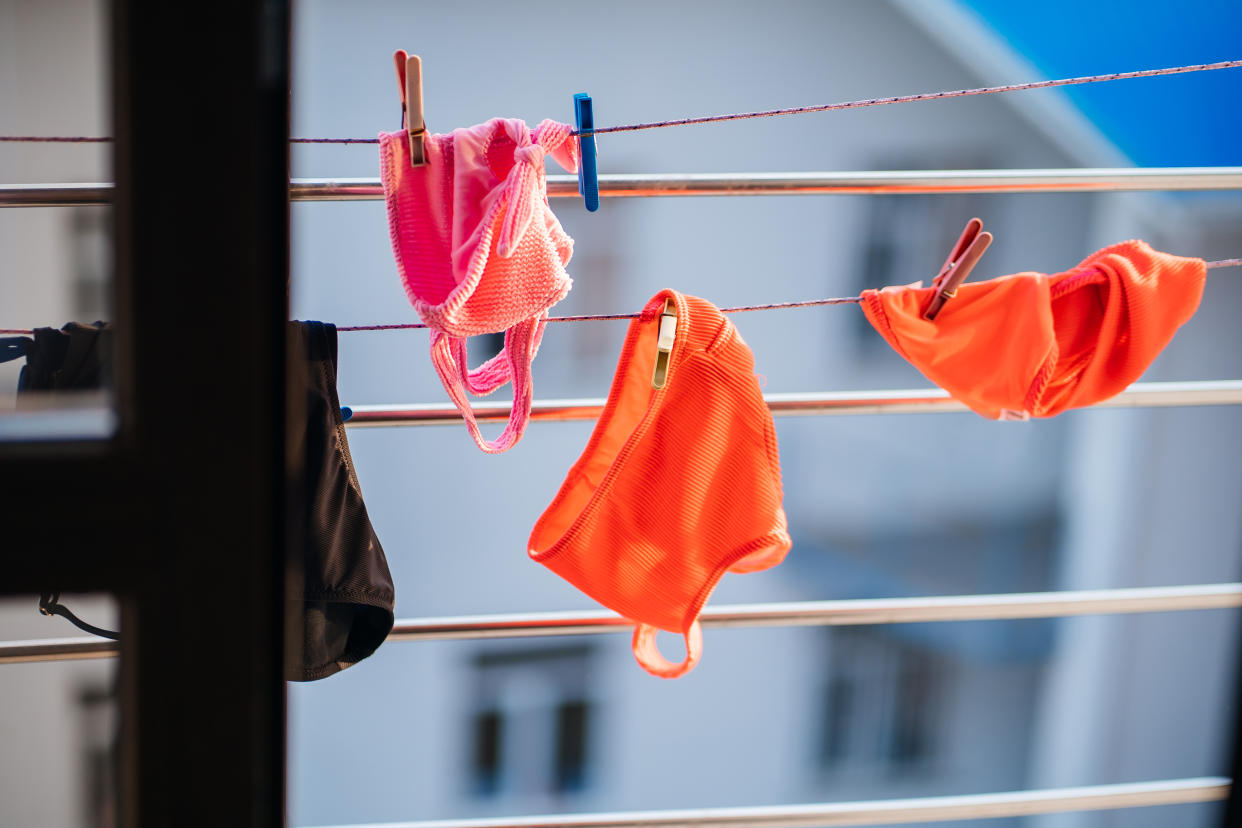Why lace underwear is illegal in three countries

Chances are, you’ve never really given much thought to how your underwear affects the health of, you know, down there. You just buy whatever’s comfiest or makes you feel the best, and call it a day.
However, there is one material that experts have warned that women should avoid when buying underwear, and three countries have gone so far as to ban outright: lace.
In 2014, Kazakhstan, Russia, and Belarus all banned lacey underwear – and not for aesthetic reasons.
Why was lace underwear banned in three countries?
Lace underwear was effectively banned after Kazakhstan, Russia, and Belarus introduced a regulation that meant clothing that came into contact with skin needed to contain at least 6% cotton, citing safety reasons.
The idea behind the regulation is to protect customers against synthetic fabrics as these do not absorb enough moisture and can cause skin problems. As lace underwear often doesn’t contain any cotton, this is why it was outlawed.
At the time, women in Kazakhstan took to the streets to protest, waving their lacey garments to fight the ban. Several of these women were detained.
"Although traditionally lace was made from cotton, the majority of lace used these days to make underwear is made from synthetic fabric such as polyester or polyamide nylon," Dr Deborah Lee of Dr Fox Online Pharmacy, tells Yahoo UK.
"Lace tends to trap moisture and microorganisms, and is not able to transmit heat in the same way as natural fibres. Without a proper gusset, the panties slip back and forth and can transport bacteria from the anus to the vagina and the urethra (the neck of the bladder) encouraging the development of vaginal and urinary infections."

Health implications of lace underwear
Along with potential vaginal and urinary infections, Dr Lee says the synthetic material that lace underwear is made from can facilitate local allergic reactions and cause a rise in vaginal pH.
"This encourages anaerobic bacteria to flourish, leading to bacterial vaginosis (BV)," she adds. "This is a very common vaginal condition associated with a characteristic fishy-smelling discharge. BV is the most common vaginal infection.
"In addition, the warm, moist vulvovaginal conditions are ideal for yeasts to thrive, increasing the risk of acute candidiasis. Recurrent urinary tract infections are very common in women with some at their wit's end trying to cope. Looking after the vulvovaginal area carefully – including wearing sensible underwear – and supporting the delicate vaginal ecosystem, is fundamental in reducing the frequency of these conditions."
Should lace underwear be banned in the UK?
Dr Lee says, despite the bans in Russia, Belarus, and Kazakhstan, it’s “hard to believe” that something similar could happen in the UK.
"The right to clothing is a human right, and choosing what to wear is accepted as a form of self-expression,” she adds. “It does make sense to raise awareness in women about the potential health risks of wearing fashionable, but less hygienic, underwear, so they can choose for themselves.
"[However] time and time again we see women in the GP surgery complaining of vaginal soreness and irritation, who don’t have an STI. Their symptoms are very often the result of using feminine hygiene products such as douches and wet wipes on the genitalia, which are absolutely not needed on sensitive genital skin. Add to this, wearing synthetic, non-wicking underwear – and you have a perfect storm. The fewer artificial products of any sort that come into contact with the vulva, vagina and whole genital area the better."

Best underwear for genital health
Lace underwear was recently voted as one of the UK’s favourite types of knickers – so what’s the best alternative?
"Underwear should be made of natural products such as cotton, hemp or bamboo – because these are breathable fabrics that do not retain moisture or bacteria," Dr Lee says.
"The fabric should be moisture-wicking – meaning it absorbs moisture and dries quickly, so the area does not stay damp and warm for too long."
She adds that, ideally, underwear should be loose fitting and not tight, have a proper fitting gusset, plain in colour as fabric dyes can irritate the skin, and you should wear a clean pair every day.
Health: Read more
How your gut health can impact your vaginal microbiome (Yahoo Life UK, 6-min read)
How vaginas change with age and why it's normal, according to an expert (Yahoo Life UK, 6-min read)
3 vaginal health trends we need to ditch in 2024, according to a gynaecologist (Yahoo Life UK, 4-min read)


